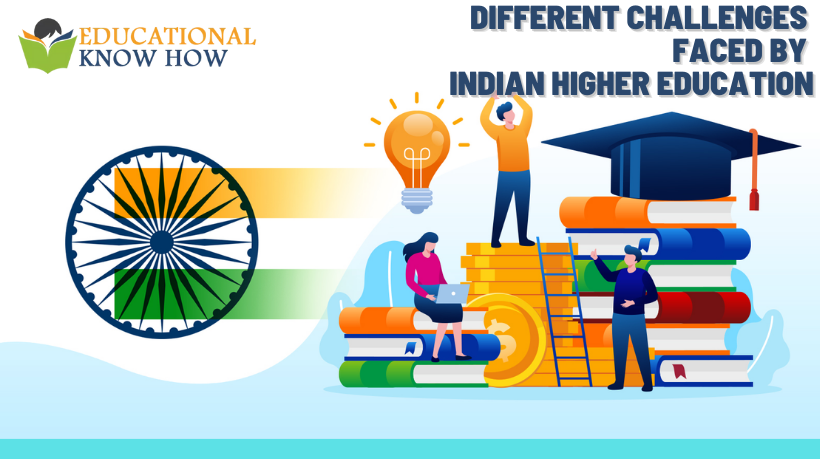
The education provided by government schools is very inadequate. This is due to a shortage of teachers and a lack of oversight. Most of the schools have low facilities and insufficient academic focus, which is detrimental to an individual’s entire development. Better academic, athletic, cultural, artistic, and music facilities must be provided to students to help them explore their areas of interest. Some of the major challenges faced by Indian higher education are mentioned below:
Students obtain theoretical information, yet skills gaps exist in several industries. Recruiters report that Indian graduates lack employable skills. This problem can be solved by including paradigm changes within the curriculum.
Students are trained from an early age to prepare for occupations with a high starting wage. This makes students focus on money from the start of their careers, whereas the student attitude should be to absorb as many skills and information as possible. They are advised to study in order to obtain a high-paying job, which is tantamount to taking our country’s future into our own hands.
Private schools and higher education institutes charge a premium for education and rely on contributions. Many parents are forced to withdraw their children from higher education because they are unable to make financial arrangements.
India has a large number of talented children, but owing to the effect of quota systems, a large percentage of these individuals are denied access to educational opportunities. The quota system is still a contentious issue that experts say is detrimental to India’s higher education system. Intelligence and merit are thought to be significantly superior to the group to which you belong.
Faculty vacancies remain high. It is reported that numerous teaching positions are unfilled, affecting the teacher-to-student ratio and restricting authorities’ ability to admit additional students.
Although India’s research publications have increased during the previous decade, it is still behind other countries by significant percentages. The curriculum and course materials we’re currently teaching were created in the late 1800s. Lack of research is a serious problem.
Theory and literature receive a lot of attention in educational institutions, whereas practical knowledge is largely ignored. Due to a lack of practical experience, students forget what they learned after passing the exam. Parents want their children to do well in school rather than learn quality material. Schools, colleges, and universities are still extremely far away from practical knowledge and skill-based education.
Another major issue in our educational system is a scarcity of qualified and professional instructors. Aside from a shortage of qualified instructors, they are also plagued with non-academic workloads that divert their attention away from teaching.
Our basic education is plagued by a plethora of problems. A large majority of elementary schools lack essential infrastructure. A large number of elementary schools have only one teacher, and some even have no instructors. As a result, the drop rate is substantial and causes worry.
These are the crucial challenges faced by Indian higher education. To get more updates on top educational resources, you can refer to online educational blogs. One of the best blogs for education is Educational Know How. It is the best blog for understanding new trends in education because it educates readers on a variety of topics and sectors.
